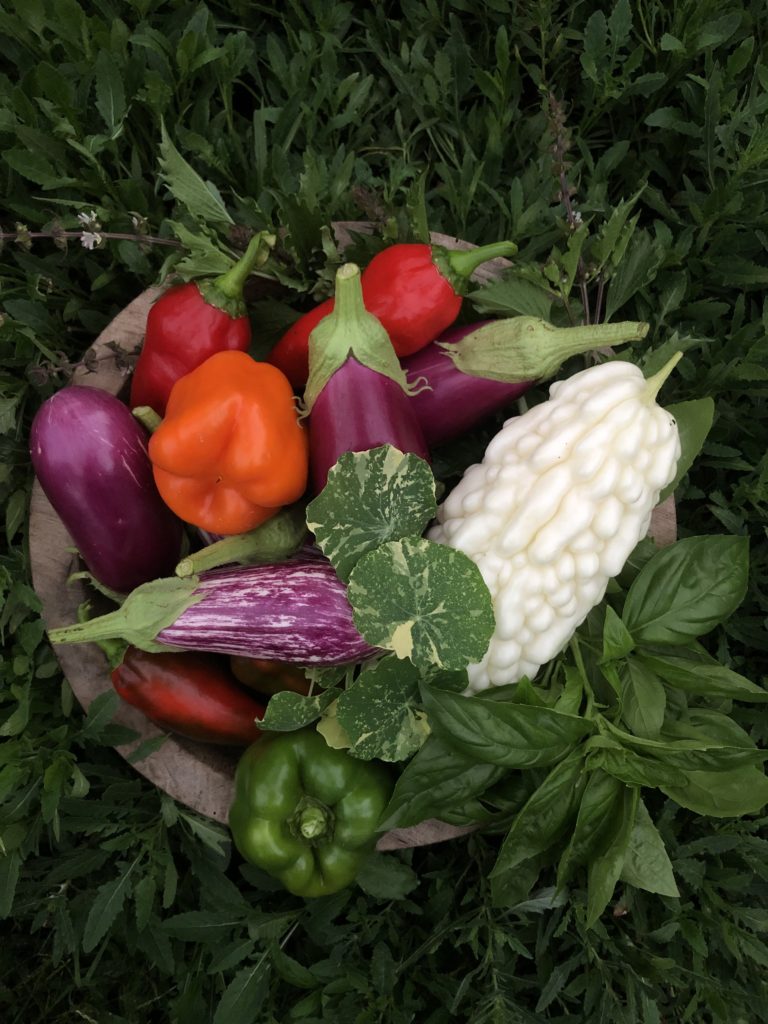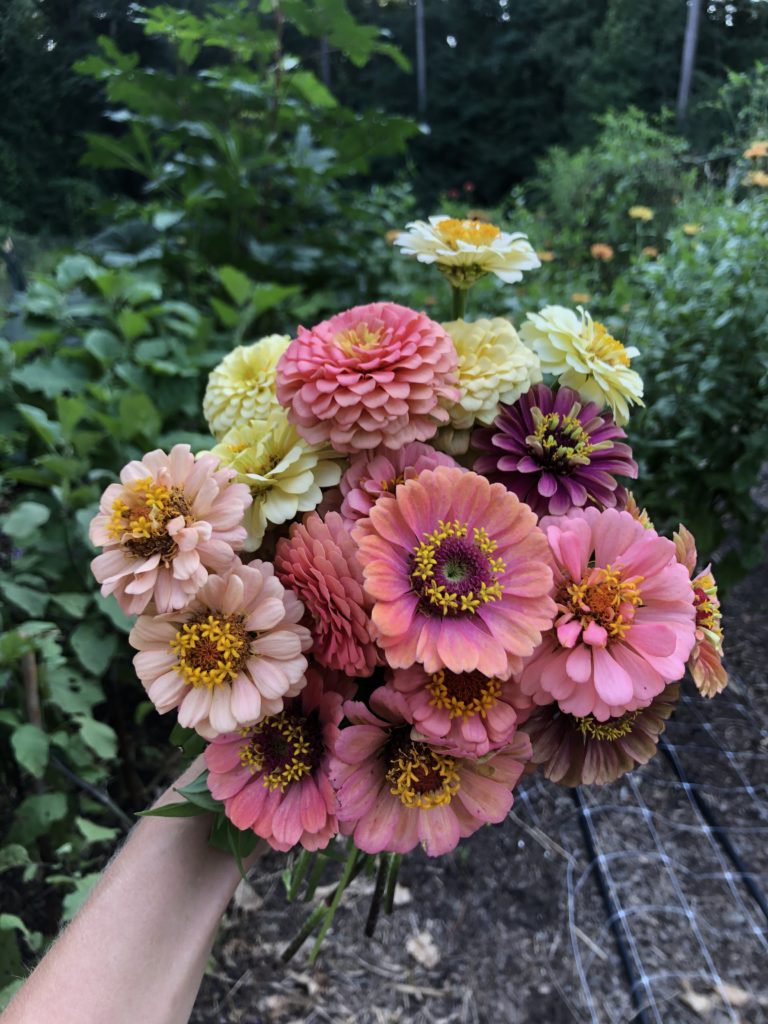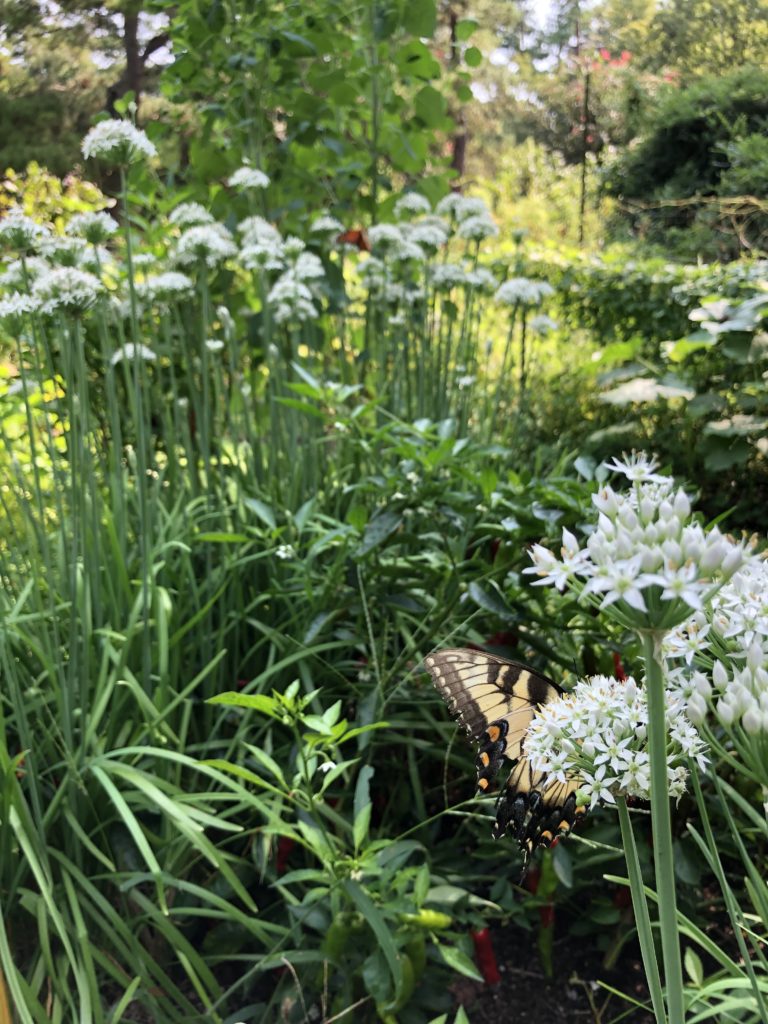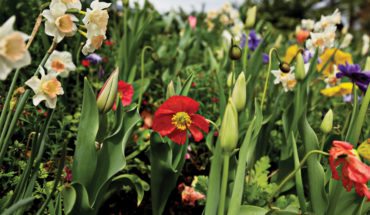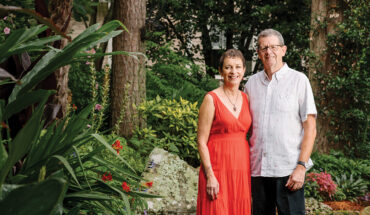Time to prep for cooler evenings and look forward to home grown greens, carrots, beans and herbs.
by Hannah Ross
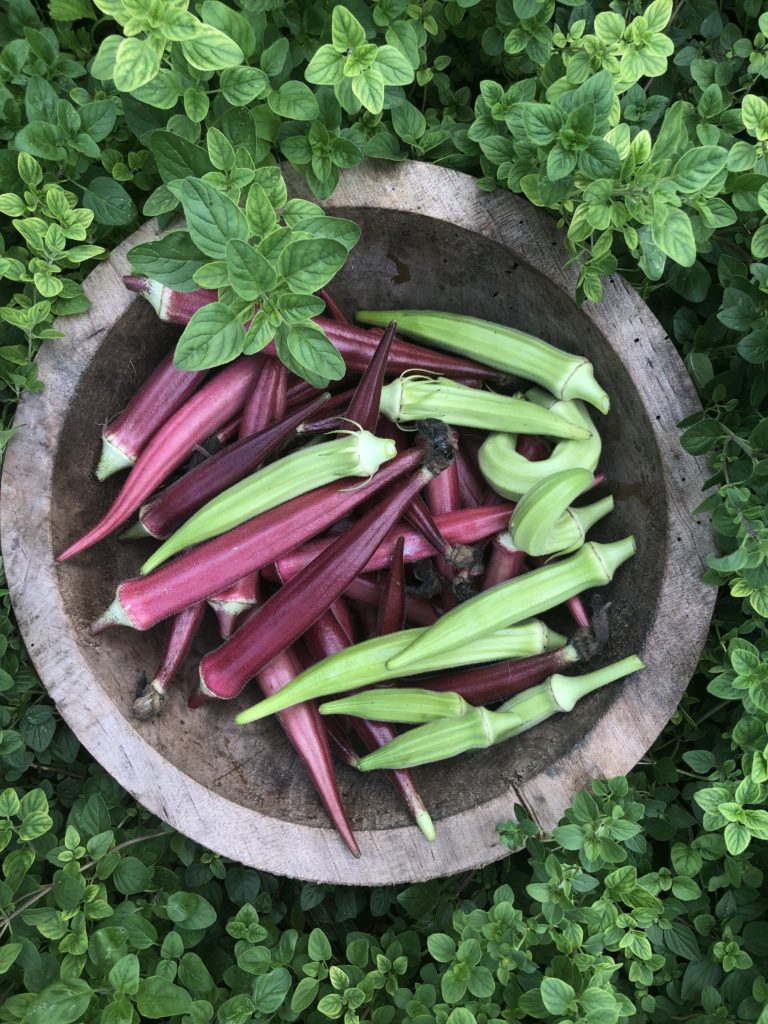
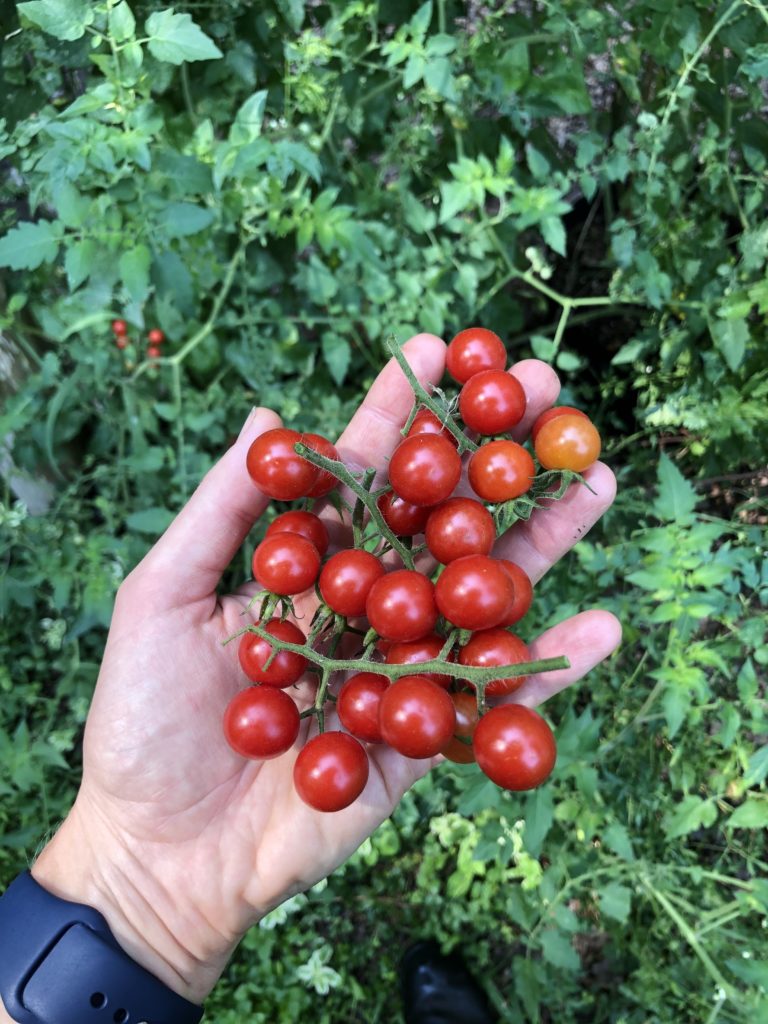
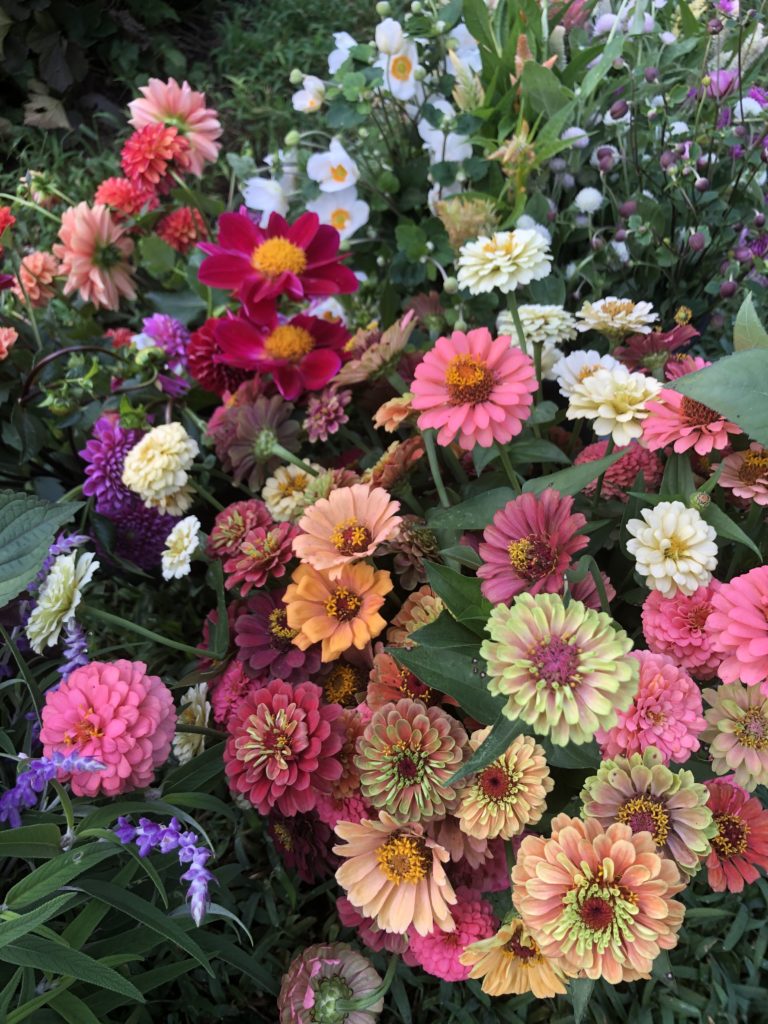
It’s that time of the year when 80 degrees feels refreshing, and we can breathe easier while we savor the last heirloom tomato sandwiches of the season. In this moment, change is palpable. Here in my garden, honeynut winter squashes are ripening on the vine, flowering annuals are setting seed and kale is germinating on a heat mat beside my desk.
As we go back to school, back to the office, and back to other routines, it’s time to savor the last summer harvests, and turn to the gentler nourishment of fall. It’s even time to think about spring flowers (though to be honest, I’m always thinking about spring flowers). Find tips below for clearing cluttered garden beds, planting fall vegetables, preparing for spring blooms, shopping for perennials and adjusting your pruning routine to protect plants from the colder weather to come.
Transition summer beds for fall and winter
Are your summer annuals looking bedraggled? Mine too. While it can be hard to say goodbye to towering zinnias and sunflowers, it’s time for a fresh start. Remove spent plant material and, if you can, compost it. Any diseased or pest-infested plant matter should be disposed of in the garbage (or a distant brush pile) rather than in compost or near garden spaces.
To prep garden beds for new plantings, it’s not necessary to till or double dig. If the soil is compacted, use a pitchfork or broadfork to aerate; just insert the prongs deeply and give the soil a gentle lift. This is a minimal-tillage method that not only keeps soil healthier, but makes our work easier. By leaving soil structure intact— simply introducing a bit more air and breaking up compaction, we protect its vital microbial community. When we dig and overturn deep layers of soil and expose them to sun and air, important microorganisms and insect populations are damaged. Avoiding tillage has also been found to decrease weed pressure over time.
Instead of mixing or overturning the soil to achieve a softer texture, think about layering your garden beds like lasagna. This way, soil microbes and chemistry will do the work of breaking down and transforming organic matter into rich, crumbly soil for you. With each changing season, loosen the soil a bit as needed, and layer it with fresh organic matter like compost or leaf mulch. As needed, incorporate a slow-release, organic fertilizer with the pitchfork (or hand rake if you have a smaller raised bed), working it gently into the first few inches of soil, and covering it with 2-3” of organic matter. This process can be applied to raised beds as well as in-ground beds. Layers of organic matter help re-inoculate the soil with nutrients following heavy-feeding crops, and activate the soil’s microbiome.
The goal when transitioning beds between plantings is to create a smooth, nutrient-rich, well-draining blank canvas to receive delicate seeds or seedlings. Once the soil has been cleared and amended with organic matter and fertilizer (if needed), use a rake to even out the surface, ensuring water will settle evenly throughout. After this process, you’re ready to plant!
Plant fall vegetables
While it’s bittersweet saying goodbye to tomatoes, corn, and other gems of summer, the savory foods of fall await. Now is the time to get leafy greens, brassicas, root vegetables and other autumn delicacies in the ground.
Direct seed these veggies and herbs in September:
Arugula
Mustard greens and mizuna
Bush beans
Bush peas
Beets
Radishes
Carrots
Cilantro
Dill
Turnips
Rutabaga
Spinach
Parships
Purchase starts and transplant these veggies and herbs in September (these are slower to mature, so direct seeding won’t likely get you a mature crop in time):
- Brussels sprouts
- Cabbage
- Broccoli
- Cauliflower
- Swiss Chard
These plants may either be direct seeded or transplanted this month:
- Kale
- Collard Greens
- Lettuce
- Kohlrabi
- Bok choy, tatsoi, and other head-forming Asian greens
- Parsley
Prep for a stellar spring flower garden
If you’ve been keeping up with these monthly garden tips, you might recall guidance on planting hardy annual flowers and cover crops in last October’s column. Well, we’ve circled back around, and it’s almost time to sow those spring flowers again. This month, refresh your memory on what to plant in October and November, and gather all the seeds, bulbs and supplies on your wishlist. Inventory the seeds you have before shopping, and create a quick garden sketch to determine how much space you have available for new flowers. Shopping with a plan helps prevent overwhelm and overspending.
Flower seeds to buy now for October and November planting include:
- Agrostemma
- Bachelor’s Buttons
- Iceland and Shirley Poppies
- Sweet Peas
- Larkspur
- Chocolate Lace Flower
- Bells of Ireland
- Bupleurum
- Any cool-season cover crops to boost soil fertility (like crimson clover or phacelia)
Flowers to transplant in fall include:
- Snapdragons
- Dianthus
- Foxglove
- Delphinium
- Campanula
- Columbine
- Scabiosa
- Rudbeckia
Bulbs to plant in fall include:
- Tulips
- Daffodils
- Crocus
- Hyacinth
- Fritillaria
- Anemone
- Ranunculus
- Not a flower, but it’s also time to buy garlic bulbs for fall planting
Favorite sources for flower seeds and bulbs include:
- Brent & Becky’s Bulbs
- Old House Gardens
- Terra Ceia Farms (NC-based)
- Van Engelen
- Johnny’s Selected Seeds
- Baker Creek Heirloom Seeds
- Floret Flowers
- Swallowtail Garden Seeds
- Renee’s Garden
- Territorial Seed (great garlic selection)
Shop for trees, shrubs, native perennials
October through January is the ideal window for planting beautiful, productive, environmentally-friendly garden additions like fruit trees, flowering shrubs, berries or pollinator-attracting native perennials. With mild temperatures and moist soil, conditions are supportive for new plants to establish strong root systems before the stress of the growing season. Unlike tender annuals, perennials and evergreens can tolerate frost exposure, even when they’re small.
Planting native perennials is a helpful way to encourage regionally-specific bees and other pollinators. The Xerces Society has an excellent native pollinator plant list specific to the Southeast. For greater depth, explore their books on plants that feed bees and monarchs.
Local garden centers carry ever-expanding selections of native perennials. Explore Campbell Road Nursery, Garden Supply Company, Logan’s Garden Shop, Homewood Nursery, Atlantic Gardening, Durham Garden Supply, Gunter’s Greenhouse, and Big Bloomers Flower Farm. Farmers’ markets are also great places to shop for perennials. Specialty, native plant-focused sources can be found through the North Carolina Botanical Garden’s extensive list.
Pump the breaks on pruning
Take a breather from pruning perennials, trees and shrubs this month (with the exception of unsightly dead branches). When we prune living stems, it stimulates tender new growth that needs time to acclimate. While the first frost is still weeks away, new growth could be vulnerable to cold damage when it strikes. Leaving some spent plant matter and seed heads intact— especially on native plant species— also provides vital habitat and food for pollinators.
NC State has a helpful pruning calendar to help you plan maintenance for next year. Go ahead and plug reminders into your calendar, with pruning tasks resuming in late winter. Instead of trying to keep up with the constant abundance of summer— long days, longer grass— we now start to shift our energy towards rest and renewal. We can ease up on summer’s pressure to maximize every opportunity, and take nature’s lead to conclude this vibrant chapter. It’s bittersweet to dwell on dwindling time, but nature shows us that closure always leads to something new.
This article originally appeared on August 25, 2022 on waltermagazine.com

